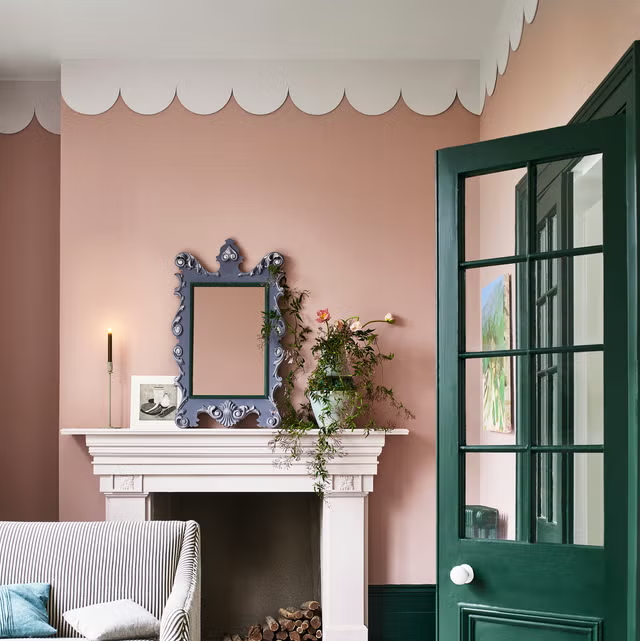
30 May The Art of Colour: Choosing Palettes for Georgian Interiors

Georgian inspired paint scheme with contemporary scalloped cornice. Credit Good housekeeping Annie Sloan Paint
Colour in Georgian interiors is more than mere decoration, it’s a way of expressing timeless elegance, highlighting classical proportions, and reflecting both historical reverence and modern taste. At Etons of Bath, we guide our clients through palettes that elevate their Georgian homes while remaining harmonious and evocative. Here are our top tips for creating the perfect colour scheme, no matter how classic your tastes may be.
- Embrace the Georgian Heritage Palette
The 18th century saw the use of soft, mineral-based hues:
- Pale stone, putty, and greys for drawing rooms
- Sage greens, olive, and dusky blues for libraries and dining rooms
- Muted yellows, peach, and pink plaster tones in hallways and stairwells
These colours were often mixed from natural pigments like ochre and chalk — subtle, earthy, and timeless.
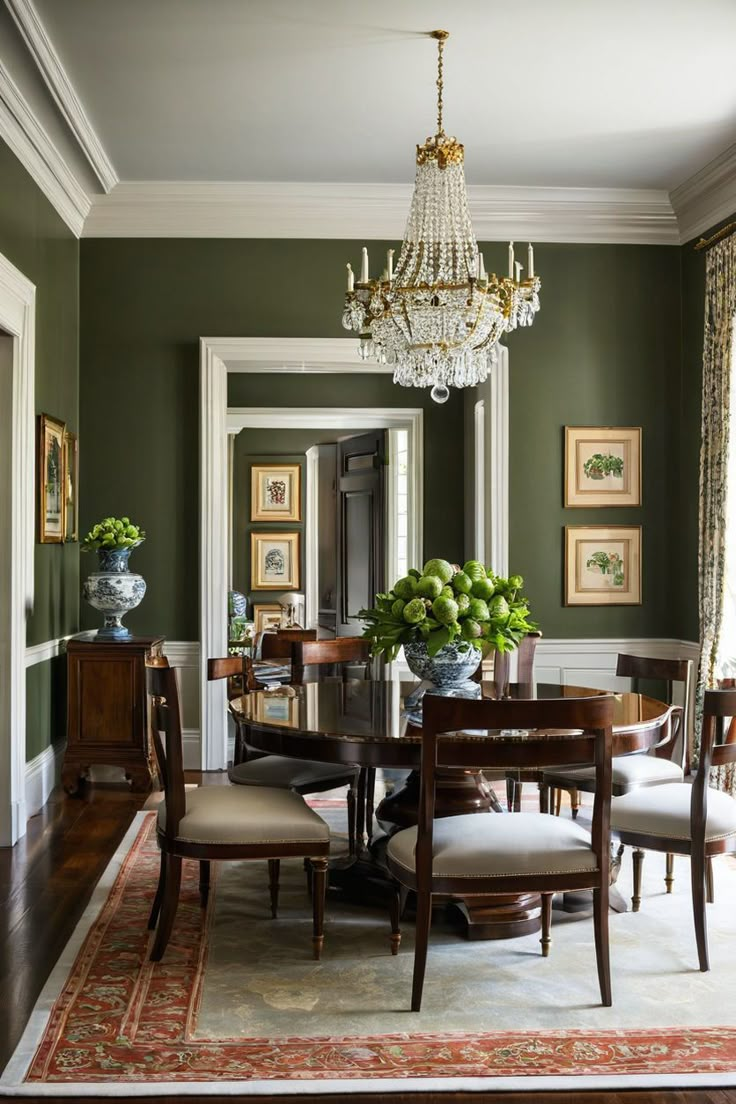
Sage green dining room is calm and classical
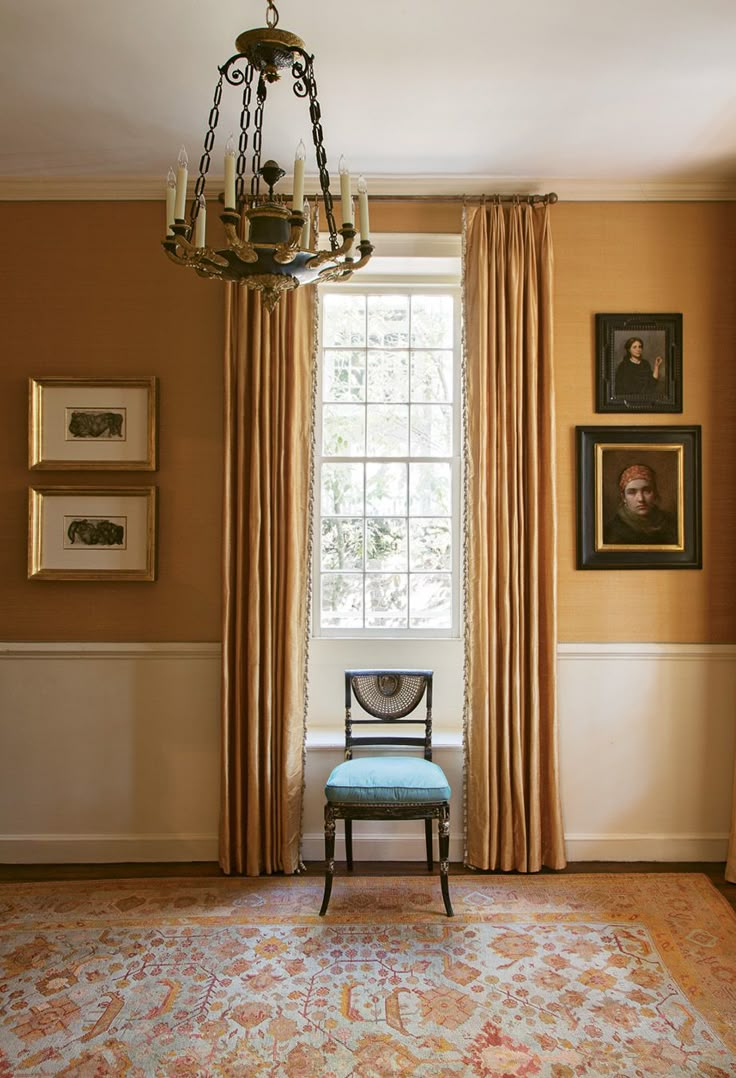
Ochre yellow works well in any space. It is warm and inviting.
2. A Contemporary Twist on Tradition
While period accuracy is beautiful, modern homeowners may crave bolder expressions. At Etons of Bath we often:
- Deepen traditional tones; e.g.forest green or oxblood in place of sage and rust
- Introduce contrast; navy walls with white cornicing, charcoal fireplaces with blush plaster walls
- Play with texture; matte finishes or limewash effects add softness and depth or we use textured wall coverings like contemporary glass cloths

Nina Campbell shows us how to use classic colours with a modern twist
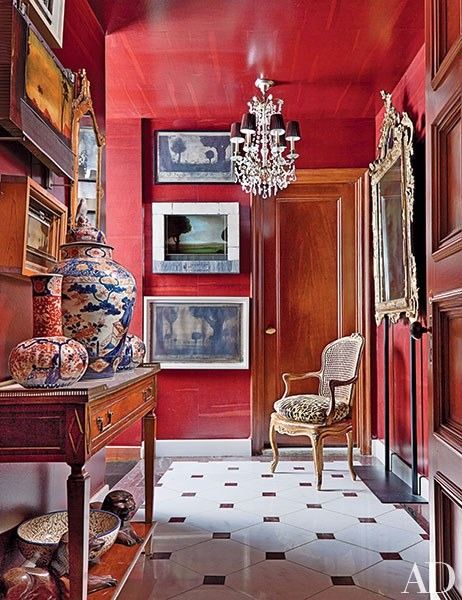
A gloss coloured ceiling can add drama and much needed reflection in a Georgian hallway
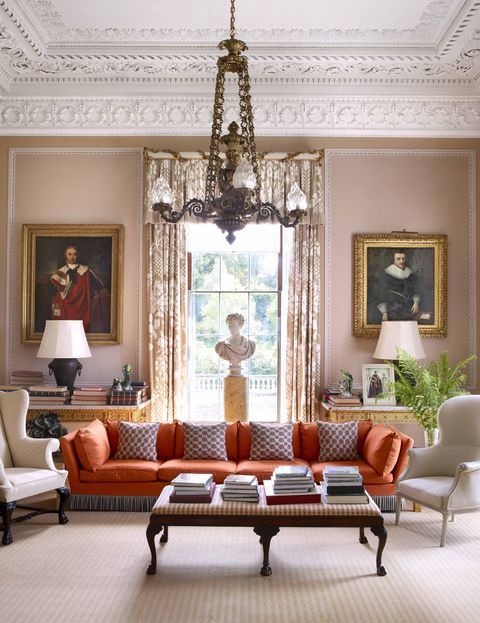
A soft peachy pink is complemented with a single accent of contemporary orange on upholstery
3. Work with Light, Not Against It
Colour in Georgian interiors should complement the generous windows and high ceilings. North-facing rooms benefit from warmer hues (like terracotta or soft gold), while south-facing rooms shine in cooler tones (like slate, duck egg, or stone). Don’t be afraid to go deep and moody in dining rooms or snug spaces.
Let Architecture Guide the Palette
Use cornicing, panel mouldings and fireplaces to frame your colour decisions:
- Consider a single tone across panelling and walls for calm, immersive luxury
- Or highlight architectural details in a shade lighter or darker for gentle drama
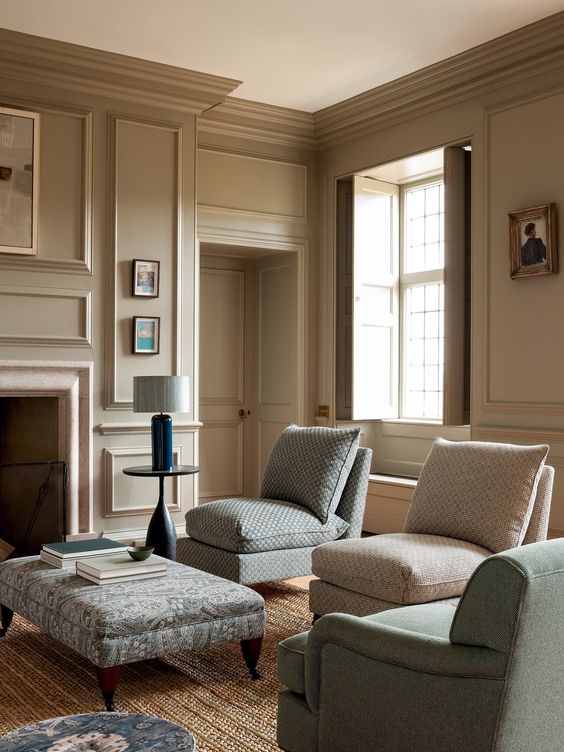
Single tone applied to Georgian panelling in this neutral stone colourway

Panel mouldings highlighted to elevate the architectural details and complement the ornate cornicing
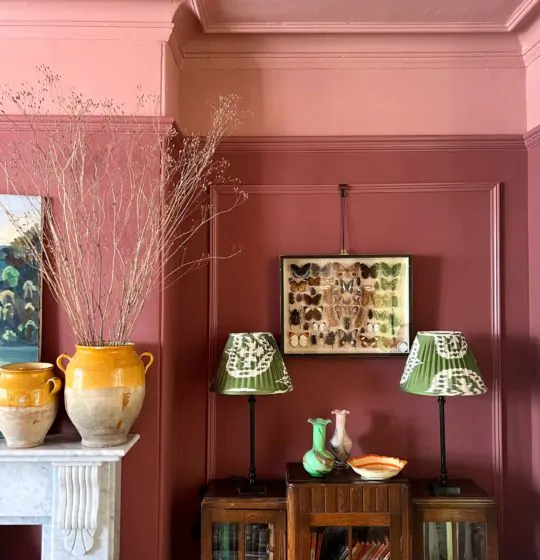
Edward Bulmer adds a modern twist to panelling with a strong colour above the panelling and on the cornicing and ceiling
4. The Goal: Timeless, Not Trendy
Great Georgian interiors have flow and feel elegant and enduring. Colour plays a crucial role in achieving that, whether you’re restoring authenticity or building something modern with historical soul.





Sorry, the comment form is closed at this time.